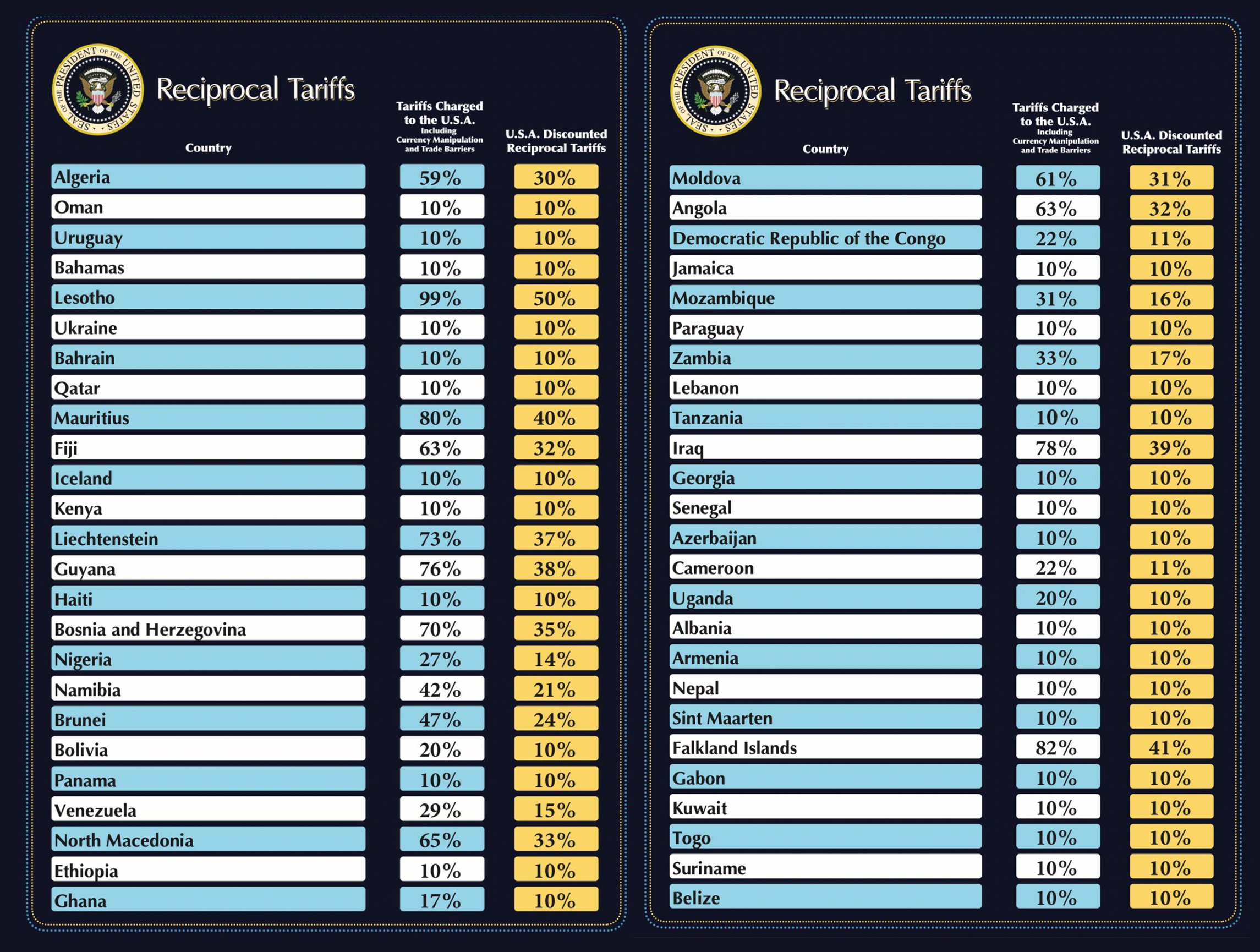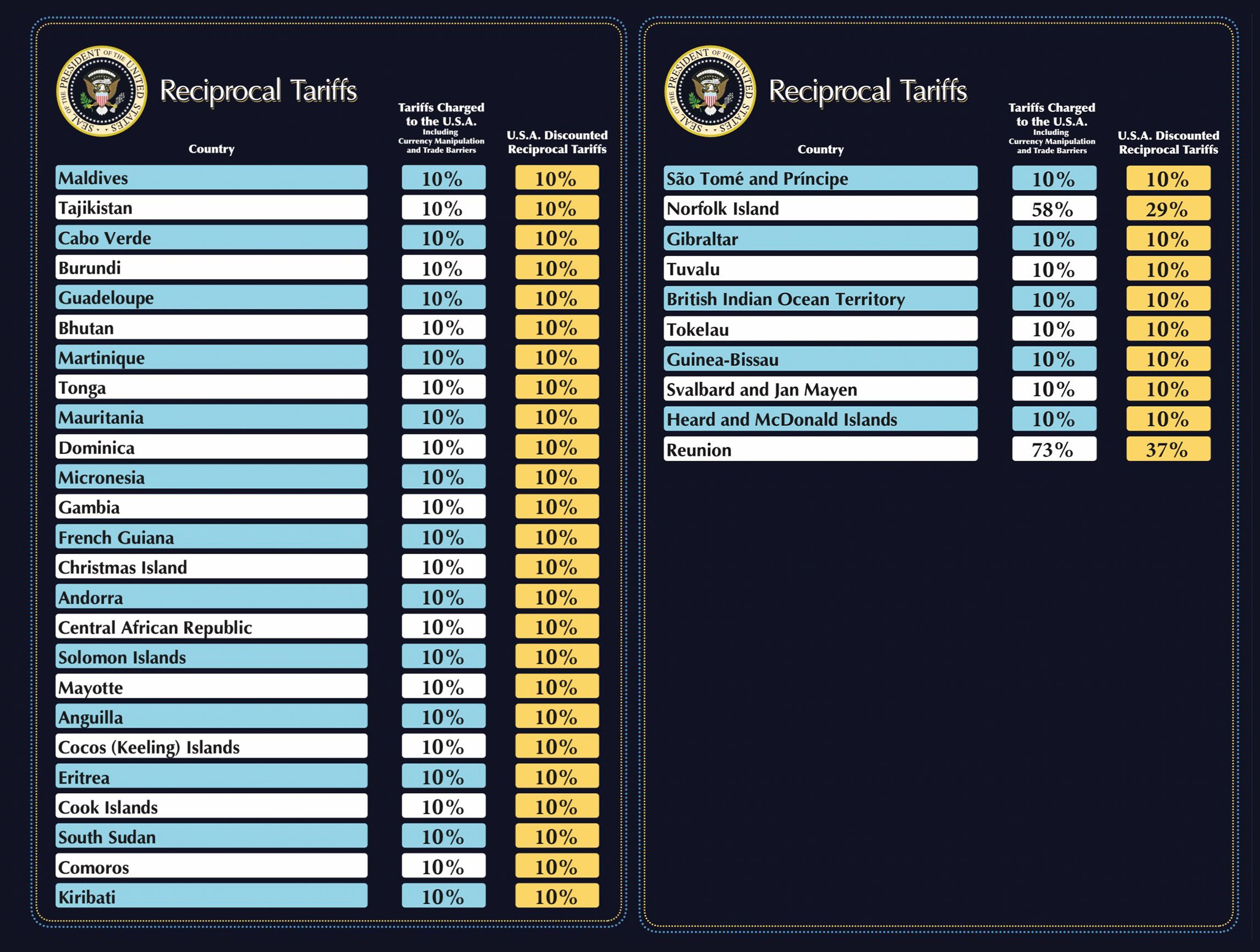
Yesterday, President Trump announced an array of reciprocal tariffs on nearly every country in the world (barring some that are already under sanctions or tariff regimes of their own). The announcement appears intended to push foreign nations to come to the table to reduce their own tariffs on American goods. Below you can see a display released by the White House detailing the new tariffs by country:
In a fact sheet about the tariffs, the administration explained that a 10% minimum tariff was being applied to all countries, and that specific countries would face higher tariffs dependent on America’s trade deficits with those countries. A fact sheet from the White House explained:
- Large and persistent annual U.S. goods trade deficits have led to the hollowing out of our manufacturing base; resulted in a lack of incentive to increase advanced domestic manufacturing capacity; undermined critical supply chains; and rendered our defense-industrial base dependent on foreign adversaries.
- President Trump is invoking his authority under the International Emergency Economic Powers Act of 1977 (IEEPA) to address the national emergency posed by the large and persistent trade deficit that is driven by the absence of reciprocity in our trade relationships and other harmful policies like currency manipulation and exorbitant value-added taxes (VAT) perpetuated by other countries.
- Using his IEEPA authority, President Trump will impose a 10% tariff on all countries.
- This will take effect April 5, 2025 at 12:01 a.m. EDT.
- President Trump will impose an individualized reciprocal higher tariff on the countries with which the United States has the largest trade deficits. All other countries will continue to be subject to the original 10% tariff baseline.
- This will take effect April 9, 2025 at 12:01 a.m. EDT.
- These tariffs will remain in effect until such a time as President Trump determines that the threat posed by the trade deficit and underlying nonreciprocal treatment is satisfied, resolved, or mitigated.
- Today’s IEEPA Order also contains modification authority, allowing President Trump to increase the tariff if trading partners retaliate or decrease the tariffs if trading partners take significant steps to remedy non-reciprocal trade arrangements and align with the United States on economic and national security matters.
- Some goods will not be subject to the Reciprocal Tariff. These include: (1) articles subject to 50 USC 1702(b); (2) steel/aluminum articles and autos/auto parts already subject to Section 232 tariffs; (3) copper, pharmaceuticals, semiconductors, and lumber articles; (4) all articles that may become subject to future Section 232 tariffs; (5) bullion; and (6) energy and other certain minerals that are not available in the United States.
- For Canada and Mexico, the existing fentanyl/migration IEEPA orders remain in effect, and are unaffected by this order. This means USMCA compliant goods will continue to see a 0% tariff, non-USMCA compliant goods will see a 25% tariff, and non-USMCA compliant energy and potash will see a 10% tariff. In the event the existing fentanyl/migration IEEPA orders are terminated, USMCA compliant goods would continue to receive preferential treatment, while non-USMCA compliant goods would be subject to a 12% reciprocal tariff.
Action Line: Click here to subscribe to my free monthly Survive & Thrive letter.
President Trump Participates in the Make America Wealthy Again Event https://t.co/CDX2abcJ7J
— The White House (@WhiteHouse) April 2, 2025







